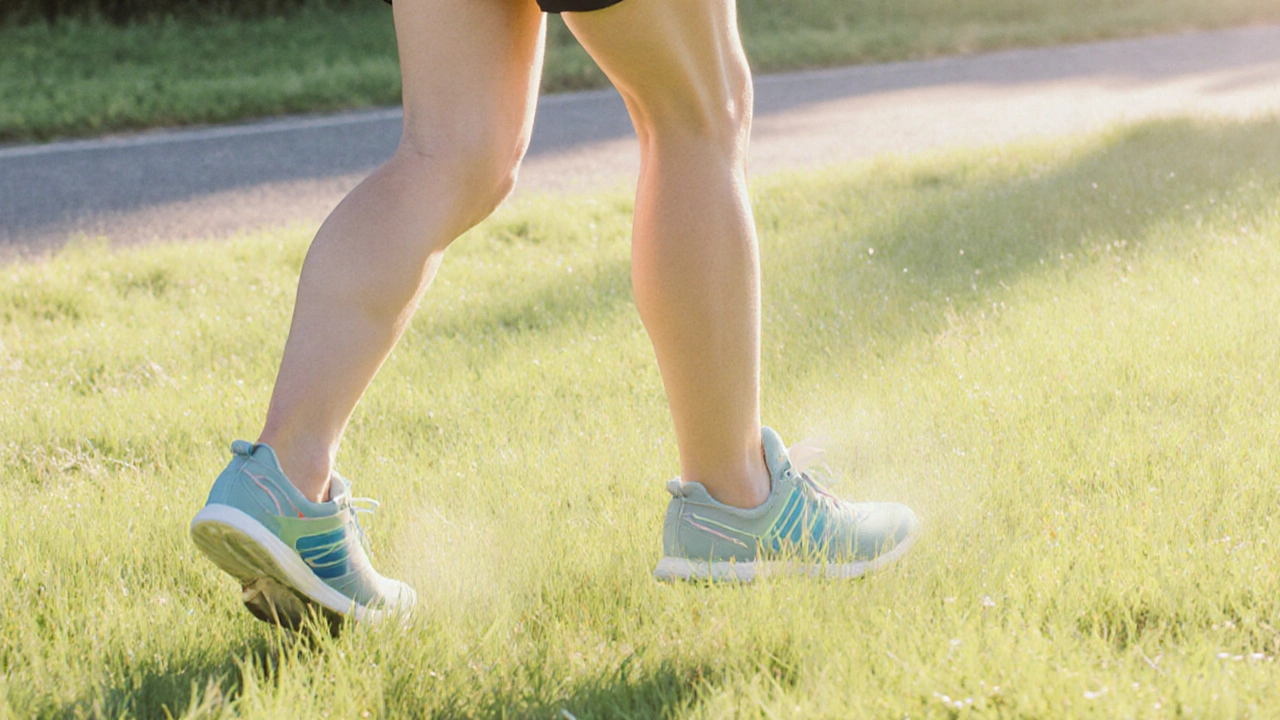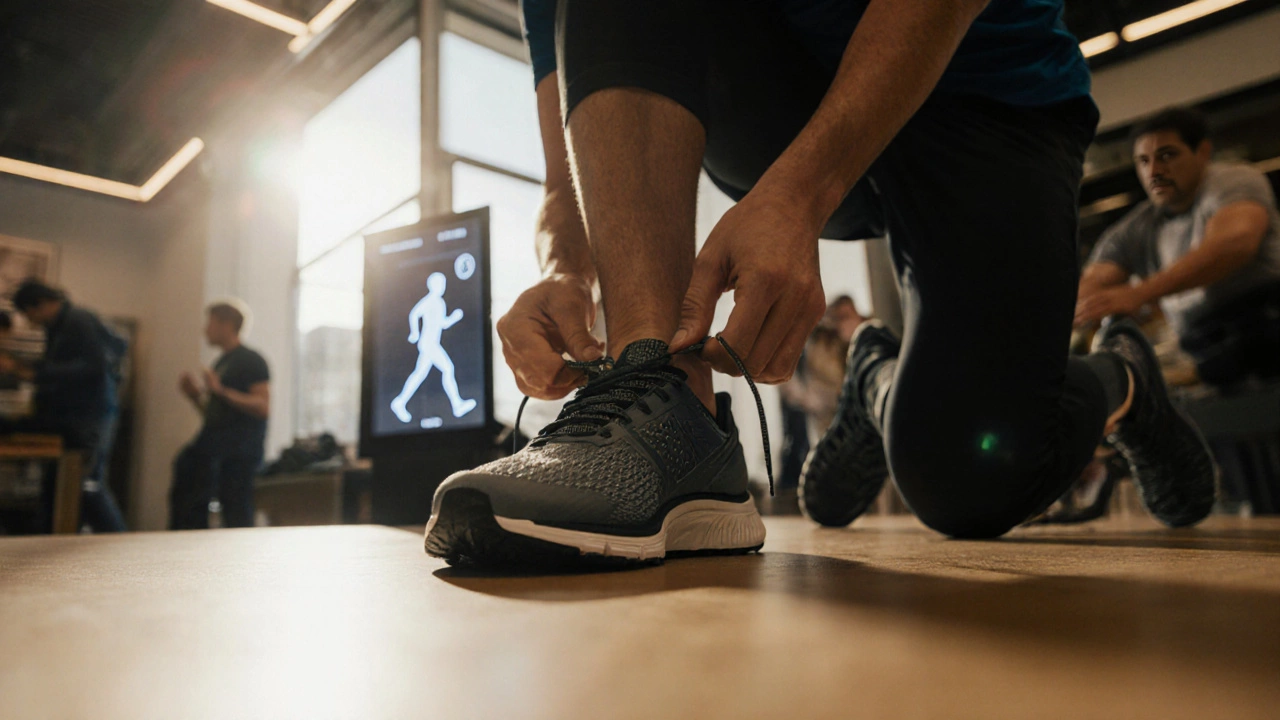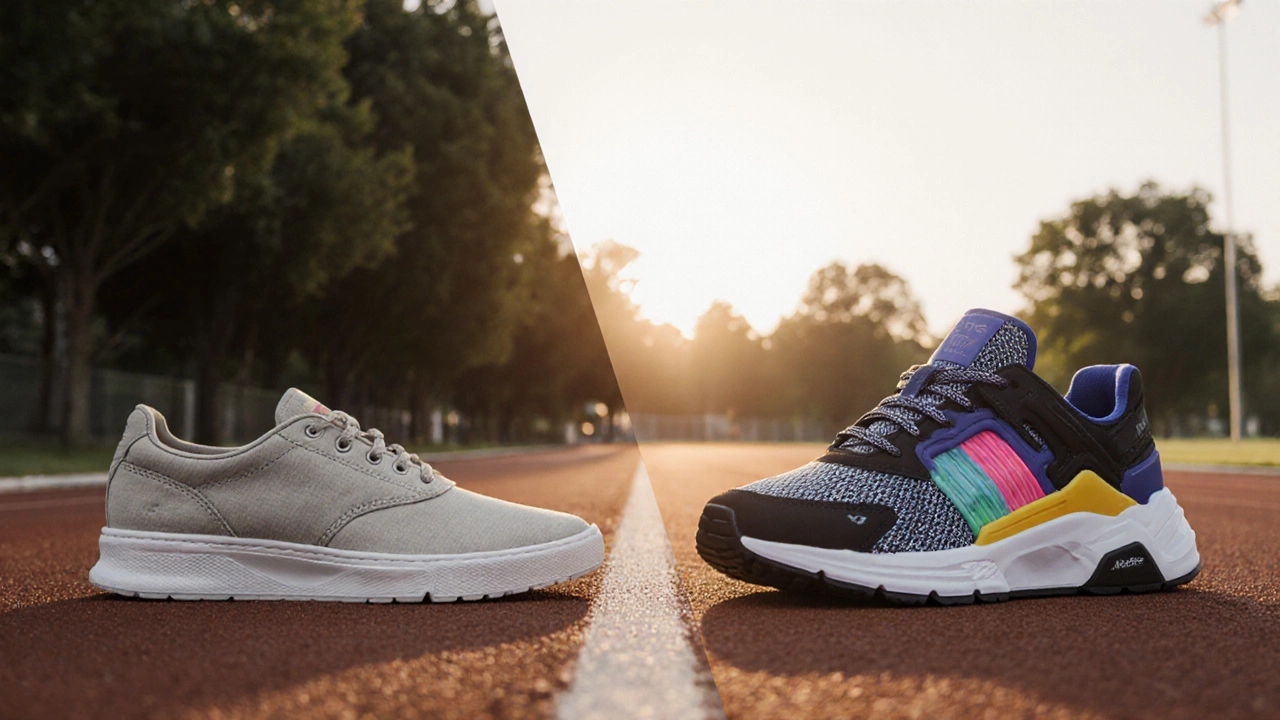Key Takeaways
- Casual sneakers for running may feel OK for short, easy jogs, but they lack key features that protect you on longer or faster runs.
- Running shoes are engineered for cushioning, arch support, heel‑to‑toe drop and breathability - all things that reduce injury risk.
- If you only run once a week on soft surfaces, a well‑broken‑in sneaker might work temporarily.
- Switching to proper running shoes early saves you from chronic aches, especially in the knees, calves and feet.
- Use the comparison table below to spot the gaps in your current sneakers before you hit the pavement.
What Exactly Is a Sneaker?
Sneakers are casual canvas, leather or synthetic shoes designed mainly for everyday wear and light activities. Their primary focus is style and general comfort, not sport‑specific performance. Most sneakers have a low‑profile sole, modest cushioning, and a flexible upper.
What Makes a Running Shoe Different?
Running shoes are purpose‑built footwear that absorbs impact, supports the arch, and guides foot motion during forward motion. Key attributes include:
- Cushioning: Specialized foams (EVA, Boost, Fresh Foam) that compress and rebound with each stride.
- Arch support: Structured midsoles that keep the foot from rolling inward (overpronation) or outward (supination).
- Heel‑to‑toe drop: The height difference between heel and forefoot, usually 6‑12mm, to promote a natural stride.
- Breathability: Engineered mesh uppers that move sweat away from the foot.
- Durability: Reinforced overlays and outsole rubber designed for miles of abrasion.
When Might Sneakers Actually Work for Running?
Not all runners need a high‑tech shoe for every outing. Sneakers can be acceptable in these limited scenarios:
- Short distance, low‑impact jogs - under 2km on a smooth track or treadmill.
- Soft terrain - grass, packed dirt or rubberized indoor surfaces that absorb shock.
- Very low weekly mileage - fewer than 10km per week.
- Already‑well‑conditioned feet - no prior injuries, good arch, and a neutral footstrike.
Even in these cases, you should check that your sneakers have enough cushioning and a stable outsole. If the sole feels thin, you’ll likely feel the impact in your calves and joints.

Risks of Using Sneakers for Regular Running
Running in shoes that weren’t built for the job adds stress to several body parts:
- Injury risk - Higher chance of shin splints, plantar fasciitis, and knee pain because the shoe doesn’t dissipate impact properly.
- Poor stability - Casual sneakers often lack medial posts or supportive overlays, letting the foot roll in ways that strain ligaments.
- Reduced durability - The outsole wears out faster on pavement, leaving you with a slippery grip after a few hundred kilometers.
- Inadequate breathability - Moisture can build up, leading to blisters or fungal issues.
If you notice any lingering soreness after a run, it’s a strong sign your footwear isn’t cutting it.
How to Choose the Right Running Shoes
Follow this quick decision‑tree before buying:
- Identify your foot strike (heel, midfoot, forefoot) by watching video of a normal run.
- Get a basic arch assessment - wet‑foot test on paper to see if your arch is low, neutral or high.
- Match your mileage and terrain: high‑cushion shoes for >30km/week on roads; lightweight trail shoes for off‑road runs.
- Try on shoes at the end of the day (feet swell) and run a short‑distance test in the store.
- Check that there’s at least a thumb‑width space between your longest toe and the front of the shoe.
Most specialty running stores will perform a gait analysis for free - take advantage of it.
Comparison: Sneakers vs. Running Shoes
| Feature | Sneakers | Running Shoes |
|---|---|---|
| Cushioning | Light foam or EVA, thin sole | Multi‑layer foam, responsive midsole |
| Arch Support | Minimal, generic footbed | Structured midsoles, optional stability plates |
| Heel‑to‑Toe Drop | Variable, often <10mm | Controlled 6‑12mm for optimal stride |
| Breathability | Often leather or canvas, limited air flow | Engineered mesh, moisture‑wicking liners |
| Weight | Typically heavier (300‑350g) | Lightweight models 200‑260g |
| Durability (road miles) | ~300‑400km before sole wears | ~600‑800km with reinforced outsole |
| Price (average US$) | $50‑$120 | $100‑$180 |
| Intended Use | Casual, fashion, light activity | Running, jogging, training, race day |

Tips to Transition Safely If You’re Switching
- Start with 20‑minute easy runs in the new shoes, then add 5 minutes each session.
- Mix in a few stride‑focused drills (high knees, butt kicks) to let the shoe’s geometry feel natural.
- Use a supportive in‑sole if you have a high arch, but avoid thick double‑cushion setups that can alter foot mechanics.
- Monitor soreness: if you feel tight calves or achy shins after three runs, cut the mileage by half for a week.
Maintenance: Keep Your Running Shoes Working Longer
Even the best shoes degrade. Follow these simple steps:
- Air‑dry them after every run - never toss them in the dryer.
- Rotate two pairs if you run >30km/week; this lets the midsole decompress.
- Inspect the outsole weekly for worn tread patterns; replace when the wear line approaches the forefoot.
- Remember the 500‑km rule: most road shoes lose their shock‑absorption around that mileage.
Frequently Asked Questions
Can I wear my favorite fashion sneakers for a 5K race?
For a one‑off 5K you might finish without injury, but you’ll likely feel extra fatigue because the shoe won’t absorb impact as efficiently. If you have a choice, bring a pair of lightweight running shoes for better performance and comfort.
What is the most important feature to look for in a beginner’s running shoe?
Cushioning combined with a neutral arch design is key. Look for shoes labeled “neutral” or “road” that offer a balanced midsole and a moderate heel‑to‑toe drop.
Do trail sneakers exist, and can they replace proper trail running shoes?
Some lifestyle brands make “trail‑inspired” sneakers, but they typically lack aggressive lugs and rock‑plate protection. For technical trails with rocks or roots, stick to dedicated trail shoes.
How often should I replace my running shoes?
A good rule of thumb is every 300‑500km (about 200‑300 miles) or every 6‑12months, whichever comes first. Keep track of mileage to avoid running on worn‑out midsoles.
Are minimalist shoes a good compromise between sneakers and cushioned running shoes?
Minimalist shoes can work for experienced runners who have strong foot muscles. They provide far less cushioning than typical running shoes, so beginners should transition slowly and focus on foot‑strengthening drills.
